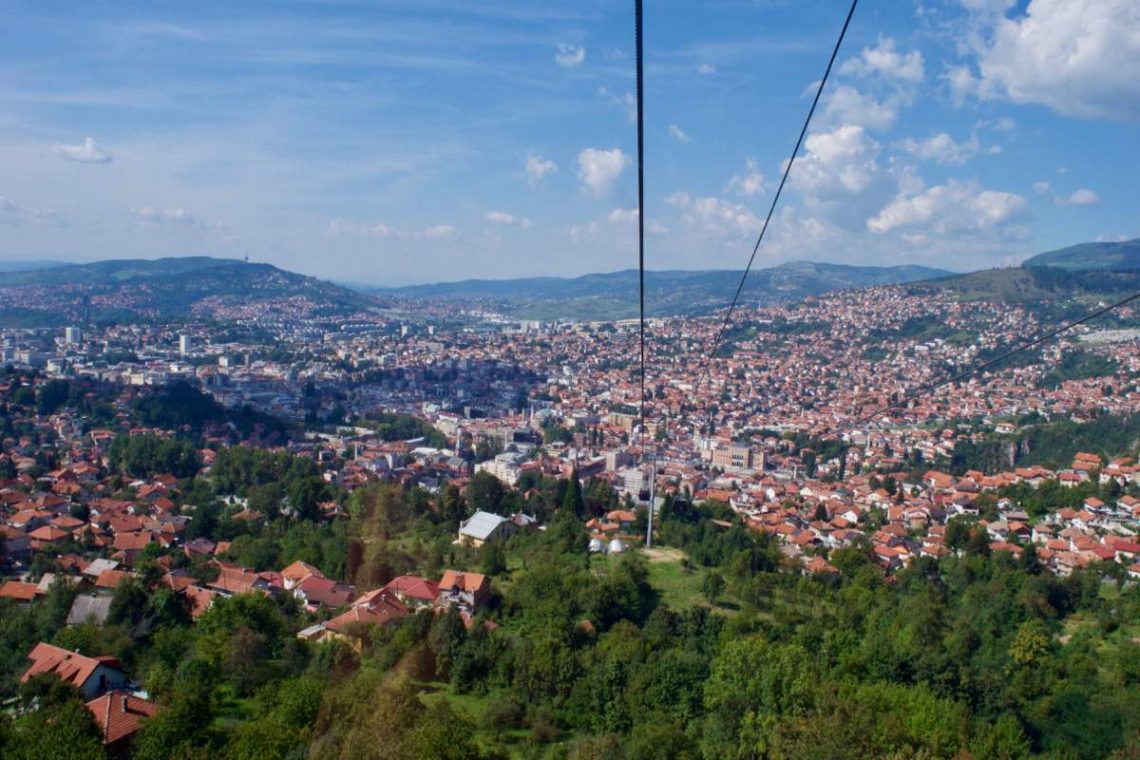
Top things to do in Sarajevo, Bosnia & Herzegovina
The Balkan country of Bosnia and Herzegovina attracted the world’s attention in the mid 1990s for all the wrong reasons. At the breakup of socialist Yugoslavia, ethnic tensions broke out between Serbians and the Bosnians of this small nation, leading to years of what would have been civil war if the countries has still been united. Untold damage was caused, but no city in Bosnia suffered more than Sarajevo.
As a result, I was surprised in recent years to find more and more travellers exploring this city with its chequered past and – even more surprisingly – coming away captivated. Keen to see what all the fuss was about, I made my own visit to find out more. And I’m not ashamed to say I fell in love.
Sarajevo at first sight is not pretty – the approach to the city is a mass of concrete apartment blocks, the signs of former Yugoslav austerity everywhere. But dig a little deeper and you will soon be enchanted. If you are considering a trip to the heart of the Balkans yourself, Bosnia’s capital should definitely be on you itinerary – and if you’re looking for inspiration, read on for my top things to do in Sarajevo.
All 12 of these destinations are located within walking distance of each other in the city centre.
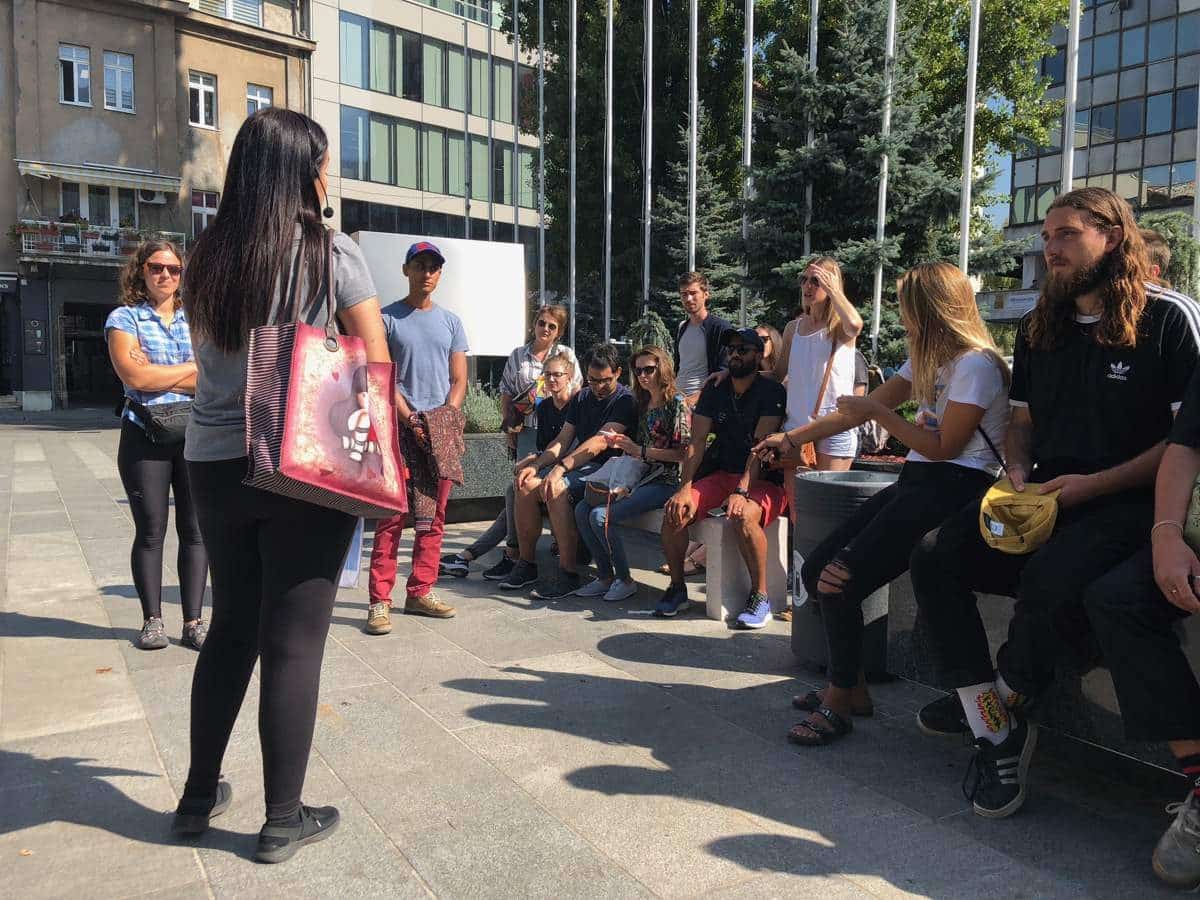
1. Take a free walking tour
The perfect introduction to the city, the free walking tour offered by Neno & Friends is excellent, and allows you to check off many of the best things to see in Sarajevo with the added bonus of local knowledge. Setting off from the National Theatre on Susan Sontag Square every day at 10:30am in summer (from November to March the tour runs on specific dates only; check the website), your local guide will take you on a journey along the banks of the Miljacka River as they explain the key sights of the city and the most important moments in its history.
One of the many bonuses of a local guide in a city with such a vivid recent history is that they will likely have personal experience of the 3-year siege of Sarajevo in the 1990s. My guide, a young woman in her 30s who was aged 8-11 during the siege, was happy to share her experiences and brought the reality of the war home to me in a way that no guidebook ever could.
Tours on offer include a general walking tour as well as one dedicated to the recent history of the city. Tours are free, but remember to tip as you feel appropriate. The company also offers private tours for a fixed fee.

2. Wander the Old Town and admire its historic fountain
Bosnia was once part of the Ottoman empire, and this means that there is a strong Turkish influence in the city. This is reflected in the Old Town, known by the Turkish-origin name of Baščaršija, where narrow streets are home to shops crammed with goods with a distinctly Middle Eastern vibe. Visit a former caravanserai which is now home to restaurants and an art gallery, or listen to the call to prayer from the Gazi Husrev-beg Mosque as you smoke a shisha pipe in a modern coffee house.
In the centre of Baščaršija square you will find the Sebilj, a wooden fountain in the Ottoman style dating from the 18th century. It is one of the most recognisable symbols of the city.

3. Try traditional Bosnian food in one of the many Old Town restaurants
If you want to try some local fare in Sarajevo city centre, look no farther than the old town, where restaurants spill out onto the streets in the summer months. Local specialities include ćevapi, spicy meat kebabs, as well as burek, a pastry stuffed with cheese, meat and other savoury fillings. This being Bosnia, prices are relatively reasonable considering the city centre location, and the food is sure to fill you up for the rest of the day’s explorations!
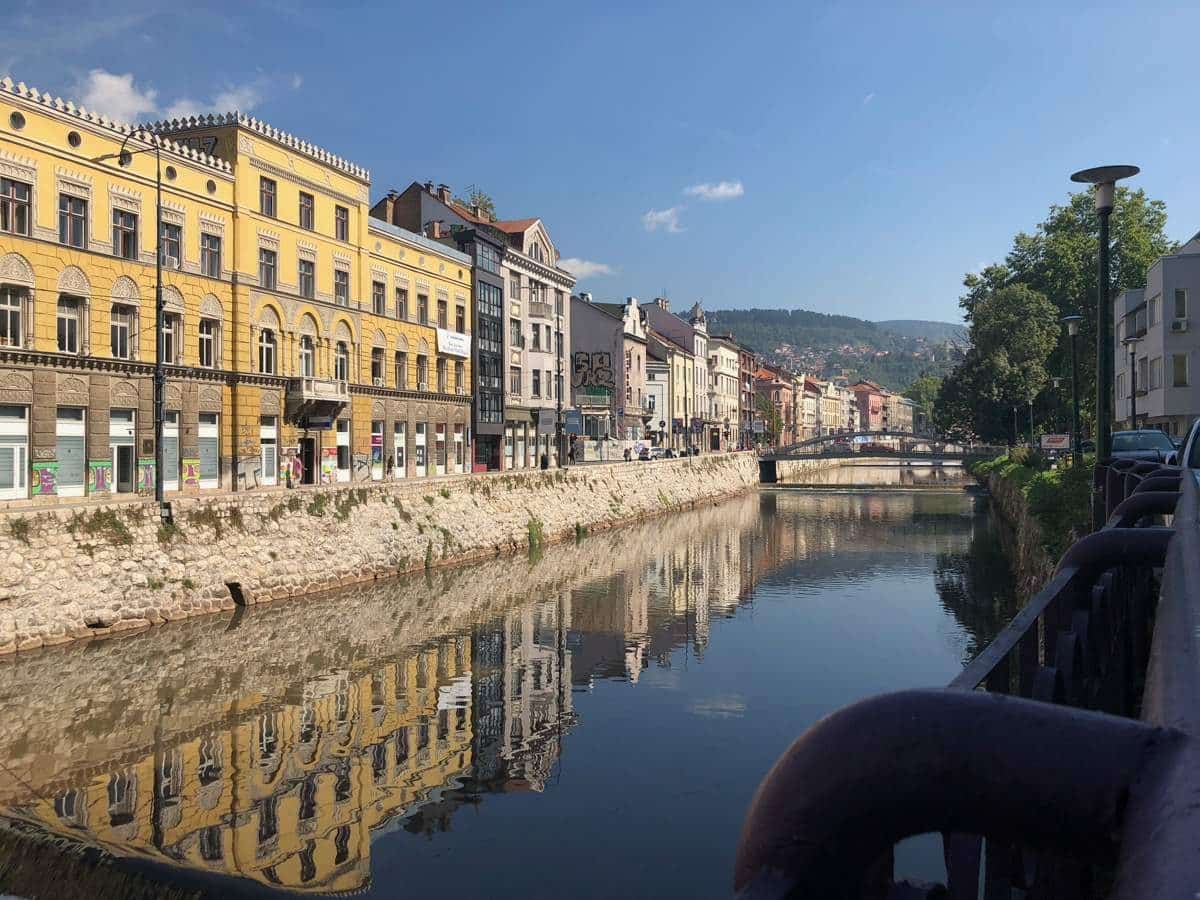
4. Stroll along the banks of the Miljacka river
If you remember the events of the 1990s, the name Miljacka will likely be familiar from news bulletins. This river, which cuts the city in two, was a dangerous place during the siege of Sarajevo, easily spotted from the surrounding mountains where snipers waited to pick off local inhabitants trying to cross the bridges from north to south.
It is something of a surprise, therefore, to discover a shallow babbling river, tumbling over a series of small weirs as it cuts through the city. The river banks are lined with parks and attractive 19th century architecture, as well as some more misguided structures from socialist times; and bridges criss-cross the water giving picture-postcard view of the mountains beyond. It’s a great place for a stroll, as you soak up the atmosphere, dodge the trams (Sarajevo was only the 2nd city in Europe to have electric trams), and enjoy the city.
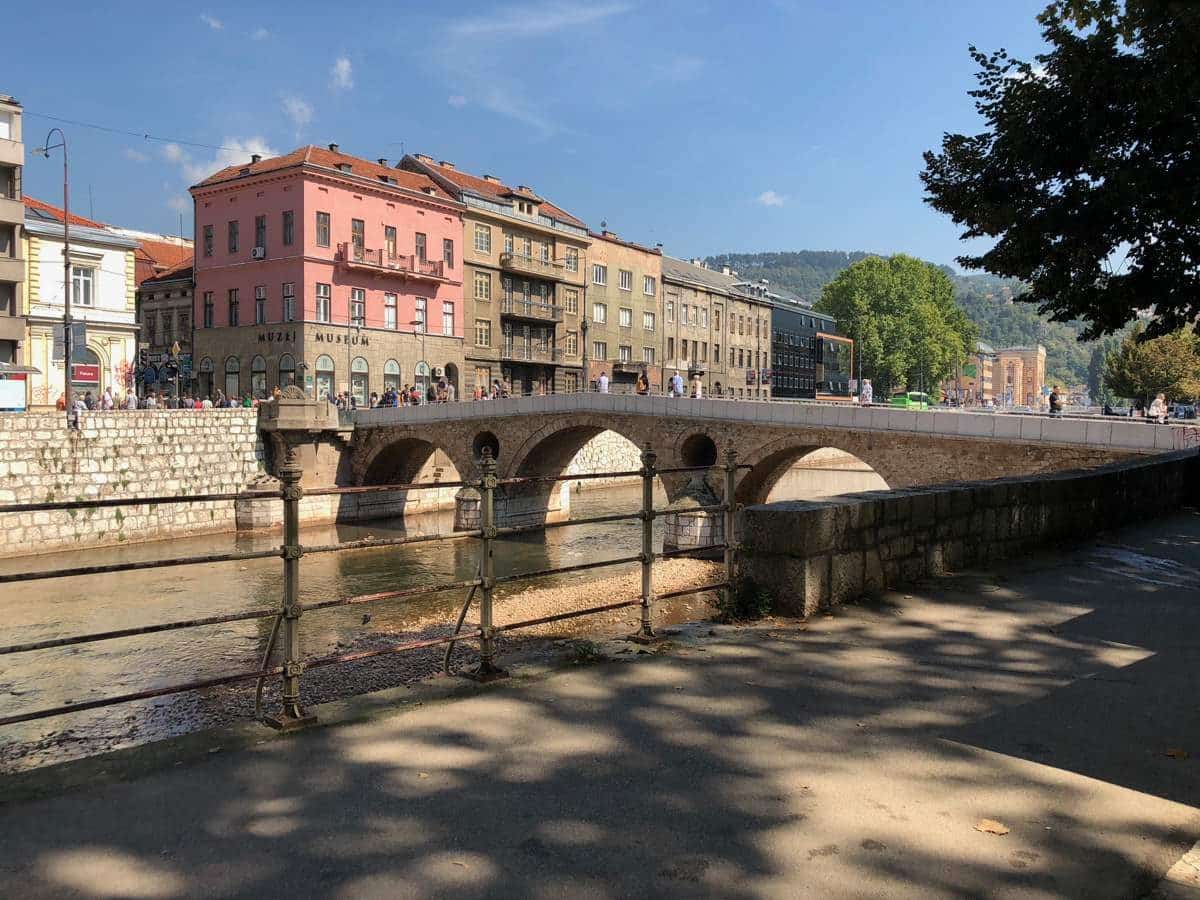
5. Visit the Latin Bridge and the assassination spot of Archduke Ferdinand
The most famous of the bridges over the Miljacka, the Latin Bridge has changed it name over the years. Dating from the Ottoman Empire, the bridge was known during Yugoslav times as Princip Bridge, for a very good reason.
On 28 June 1914, a young man by the name of Gavrilo Princip achieved notoriety by effectively causing the start of the First World War. Princip was one of 6 would-be assassins in town that day to attempt to assassinate the rule of Austro-Hungary, Archduke Franz Ferdinand, as he paraded through the city in an open coach on his way to a function at City Hall. The story is complicated (find out more on the free city tour!), but of the 6 only Princip landed his shot. The Archduke was killed, and the rest is history.
A monument at the northern end of the bridge commemorates the assassination. But Princip, who died in 1917 but was venerated as a hero in Socialist times, has today fallen back out of favour, and the memorial recognises the event rather than venerating the man who caused it.
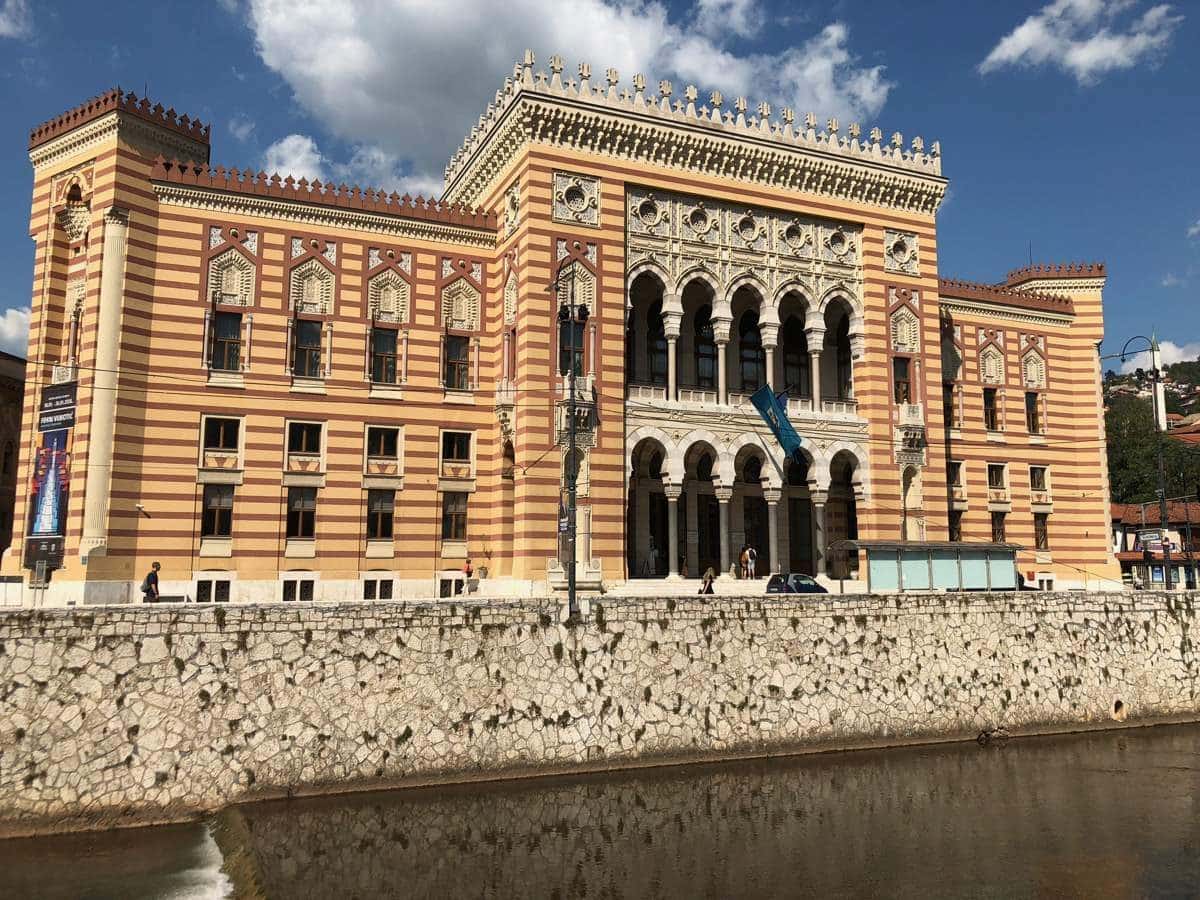
6. Admire the colourful City Hall
Sarajevo’s City Hall, or Vijećnica, was built during the period of the Austro-Hungarian Empire in the early 1890s. Destroyed during the siege of Sarajevo 100 years later, it was restored and reopened in 2012.
Today the City Hall hosts events and exhibitions. But it is the building’s sheer size and colourful, striped stonework that makes it stand out in its riverside location.
City Hall is also notable as the place from which Archduke Ferdinand was returning when he was assassinated, just a few hundred metres away, in June 1914.
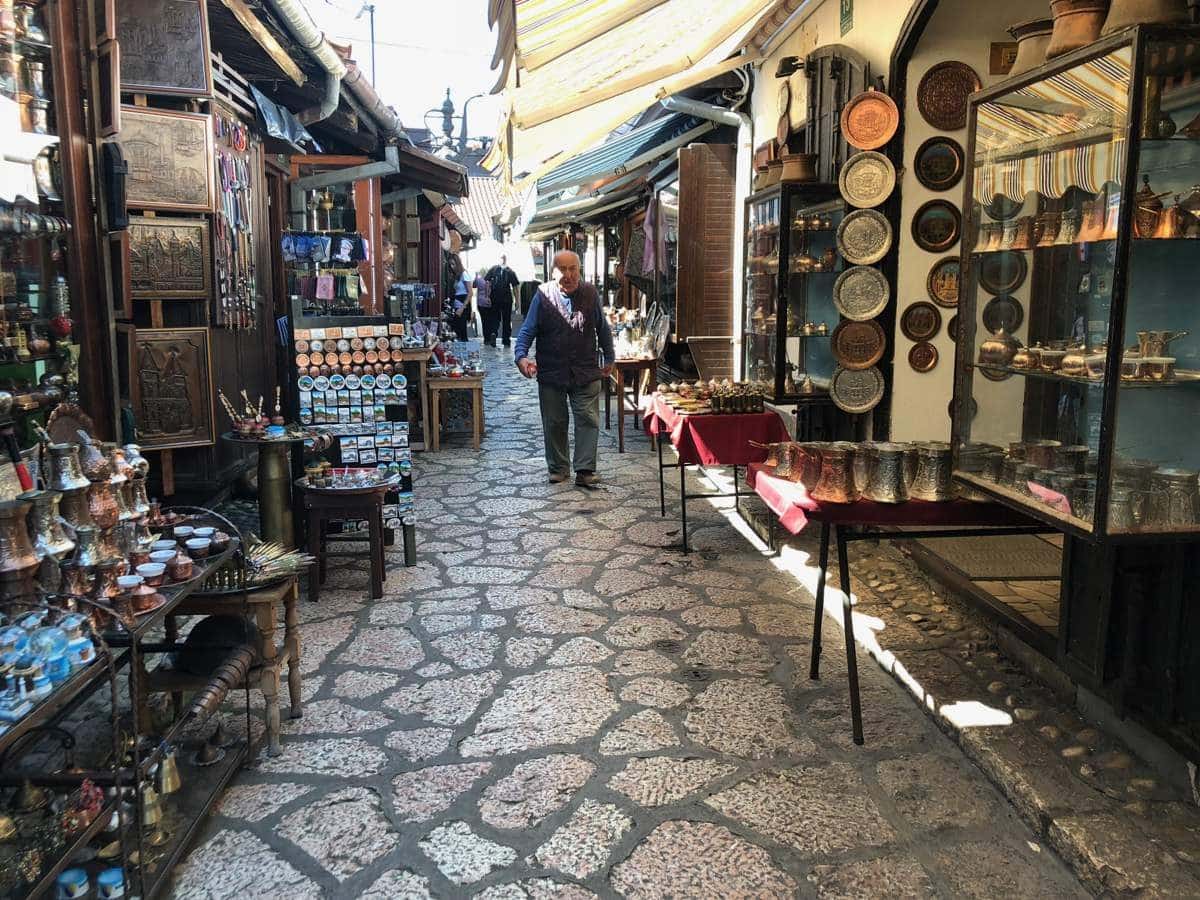
7. Eat Bosnian halva
If you have travelled in the Middle East, you will familiar with halva, a sweetmeat made from nut butter (usually sesame) and sugar. With its strong Turkish influence, it is no surprise that Sarajevo is also a great place to try halva. I can recommend the small shop on Zelenih beretki, immediately north of the Latin Bridge, where the friendly owner let me sample what I was assured was “Bosnian halva”, made with chocolate and vanilla. Delicious.

8. Check out the war damaged buildings
In the 25 years since the Sarajevo siege, the city has undergone significant rebuilding and restoration. But the signs of the conflict are still there to see, and there are buildings which to this day bear bullet holes and patches from shell damage.
That these signs are still visible in the city centre is deliberate. The war between Serbs and Bosnians had its roots in ethnic and religious divisions, and while Serbs, Bosniaks and Croats have always lived harmoniously in Sarajevo, nobody wants the same tensions to resurface. The damaged buildings serve as a daily reminder of what could go wrong – and mustn’t happen again.
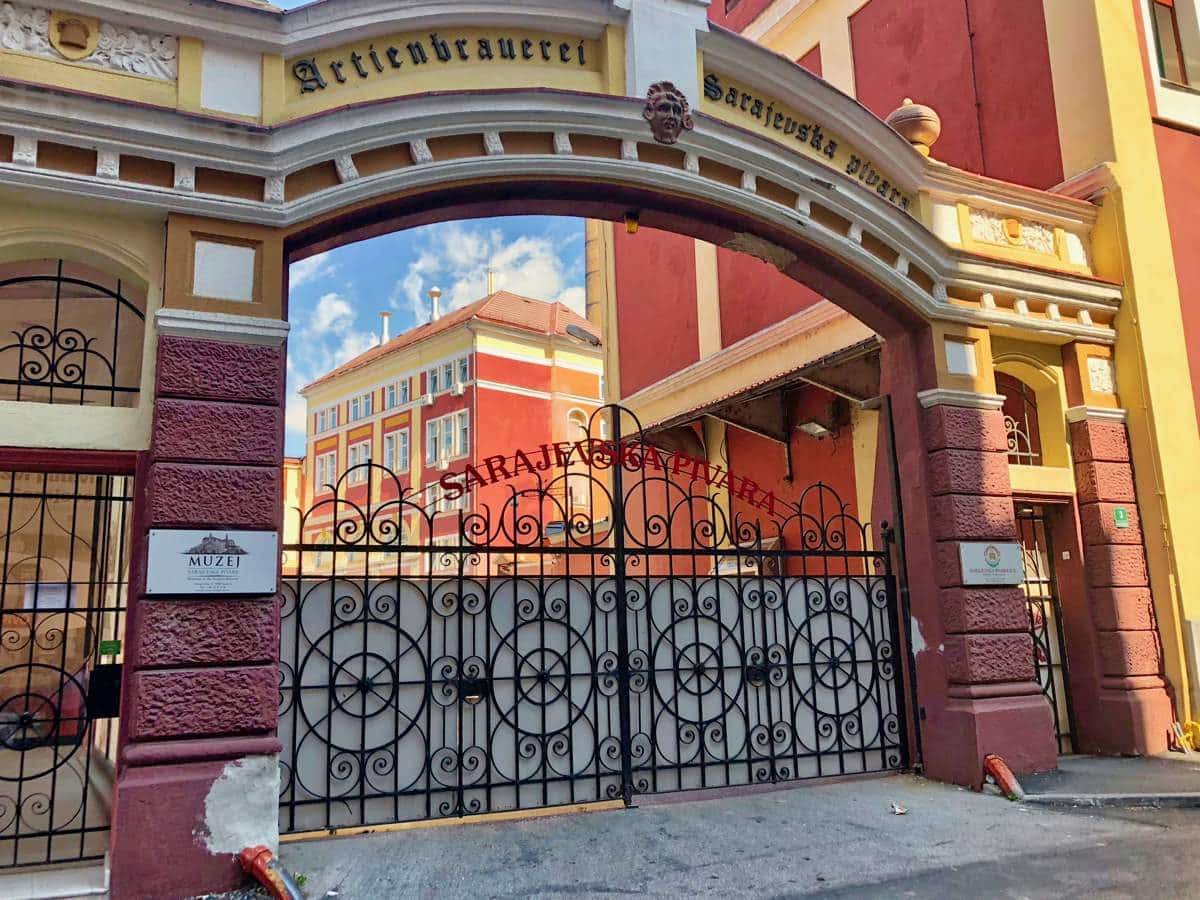
9. Try a Sarajevsko beer and visit its historic brewery.
Every country has its beer, and Bosnia is no exception, the most recognisable being the Sarajevsko brand which is still brewed in the heart of the city. The historic original brewery still stands in all its glory to the south of the river, but there is more to this place than just beer.
Breweries are often established close to sources of fresh water, and this one was no exception. During the siege of the 1990s production never stopped; and even if the quality of the beer wasn’t great, the tradition continued. But much more important was the brewery’s role in providing fresh water for the besieged citizens who came here in their droves. The brewery is located at the very foot of the mountains surrounding the city, making it comparatively hard to spot from the sniper positions on the mountain tops; as a result, it became one of the most reliable places for Sarajevans to obtain this most vital of natural resources during the long years of struggle.
10. Visit mosques, churches and synagogues in this multi-faith city
The Bosnian war may have been at least partly about religion, but the citizens of Sarajevo have always cohabited more-or-less happily in the city. During Yugoslav times the population was split fairly equally between Bosniaks, Serbs and Croats, although today the Bosniak community makes up about 80% of the city.
One result of this multi-ethnicity is the range of faiths practiced in Sarajevo. Islam and Christianity are the most popular, and mosques and churches can be found in close proximity all over the city. Historically the city has also had a large Jewish population, although Sarajevo’s Jews fared no better than others in Europe during World War II and were largely eradicated; today a few synagogues still remain.
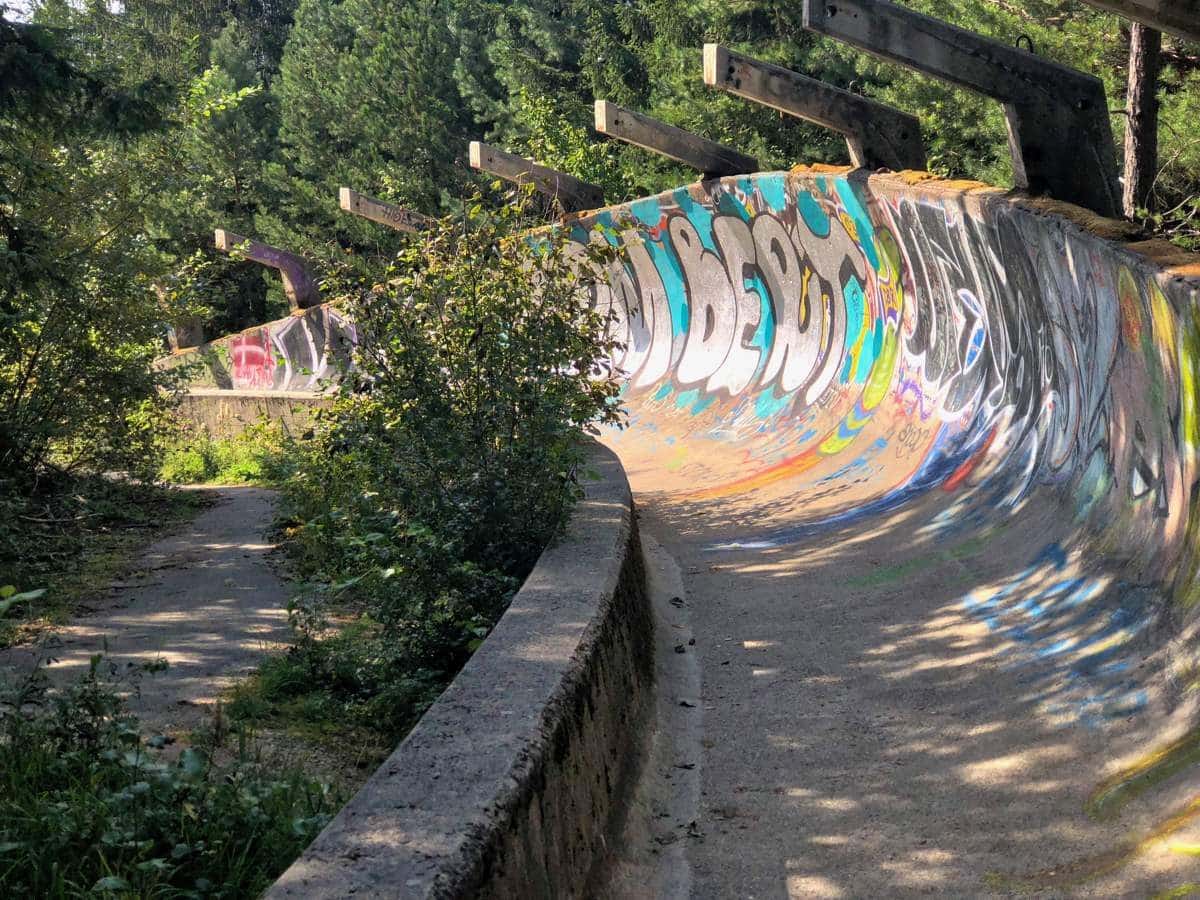
11. Ride the cable car up Trebević mountain and check out the abandoned bobsled track
Built for the 1984 Winter Olympics, the much-graffitied bobsled track at the top of Trebević mountain lies derelict as the forest grows around it. It is one of Sarajevo’s quirkier attractions, and surprisingly easy to reach since the city’s cable car was reopened in 2018. A 7 minute journey gives breathtaking views across the city as you travel to the top of the mountain; from there, the bobsled track is a few minutes’ walk away. The track is free to access and can be walked along its length; just remember that you will have to walk back up again afterwards!
For more details, check out my other post: https://readingthebooktravel.com/sarajevo-bobsled/
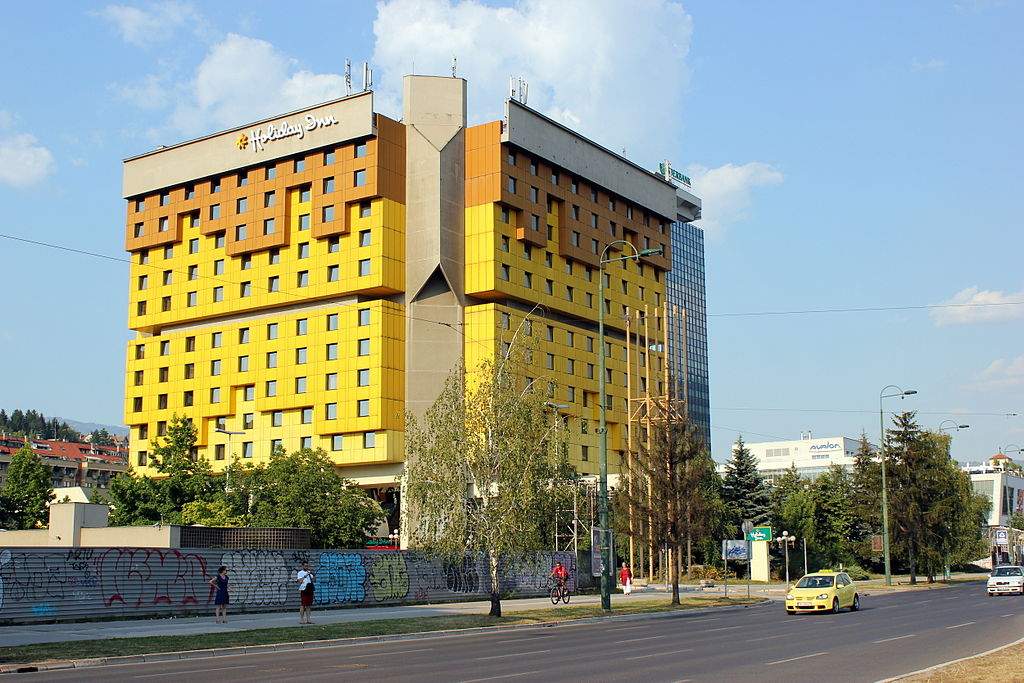
12. View (or stay in) the iconic Holiday Inn building
If you remember the Bosnian war, you will remember the building of the former Sarajevo Holiday Inn. This boxy concrete hotel was built for the 1984 Winter Olympics, but gained notoriety less than 10 years later as the home of foreign journalists during the siege, when it underwent heavy shelling. Familiar from news reports of the period, today the building is the Hotel Holiday, and is brightly painted in yellow as the city looks towards a shining future.

Bonus: the Tunnel Museum
Compiling a list of the best places to go in Sarajevo, it’s impossible to leave out the Tunnel Museum (https://tunelspasa.ba/ – use the drop-down box at the top to switch to English). Unfortunately the museum closed early on the day I visited, but it will be top of the list if I am lucky enough to return.
The tunnel, 800 long and just 1.6m high, runs under the airport runway and was dug during the siege of Sarajevo to provide the final lifeline for the city’s population and its link to the outside world. A visit to the museum provides exhibits, a video and access to a section of the tunnel to experience it for yourself.
The Tunnel Museum is the only experience on this list not easily accessible from the city centre. It can be reached by a combination of public buses (tram 3 to Ilidža then bus 12 to Kotorac) followed by short walk; alternatively, take a taxi or group tour if you don’t have your own transport.
How to get to Sarajevo
The city has its own international airport, with flights to Germany, eastern Europe and Turkey including the major hubs of Munich and Istanbul.
Sarajevo can also be reached from neighbouring cities by bus and, in some cases, train. I travelled by car; driving time from Mostar to Sarajevo is around 2 hours, and the road travels through spectacular scenery.
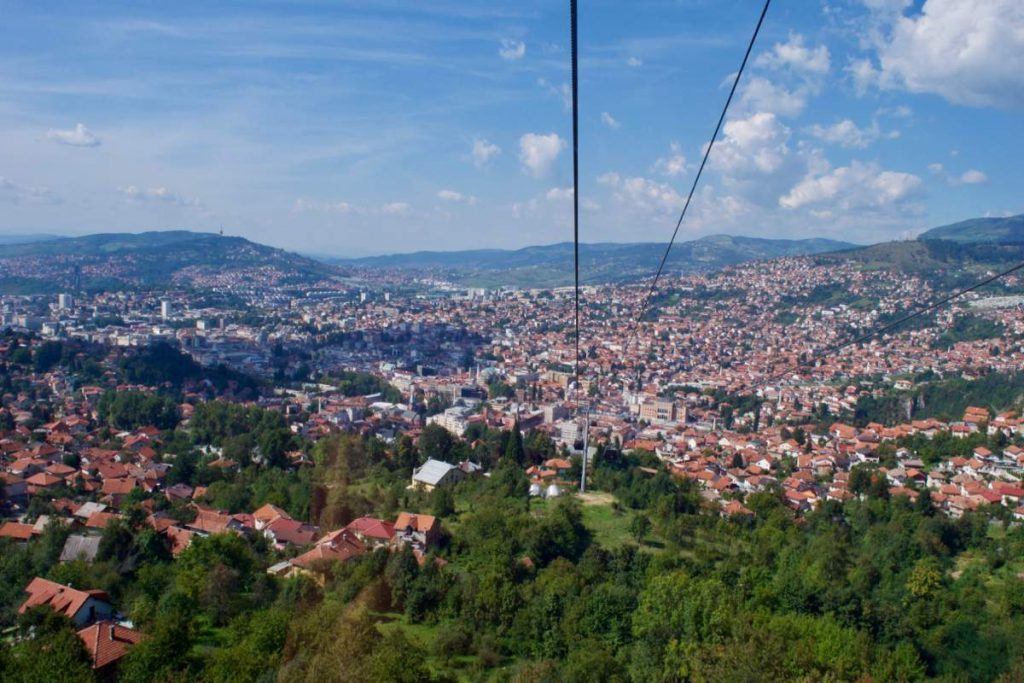
Map of Sarajevo
To search for the locations of the places mentioned in this post, click on the map below!
Want to discover more of Eastern Europe? Check out these posts for more inspiration!
- Chernobyl tours from Kiev: Is Chernobyl safe to visit?
- Kiev metro: How to use it, and the stations you MUST visit!
- What to do in Kiev in winter: The perfect 3-day itinerary
- The best day trips from Kiev: Visit Uman, central Ukraine
- One day in Tirana: Taking the Kotor to Tirana bus
- What to do in Sarajevo: The abandoned Sarajevo bobsled track
- Top things to do in Sarajevo, Bosnia & Herzegovina
- 4 perfect half day trips from Mostar, Bosnia
- Getting around Warsaw by public transport
- Top things to do in Warsaw: The perfect Warsaw itinerary
Want to keep these suggestions of things to do in Sarajevo for future reference? Pin this post for later!


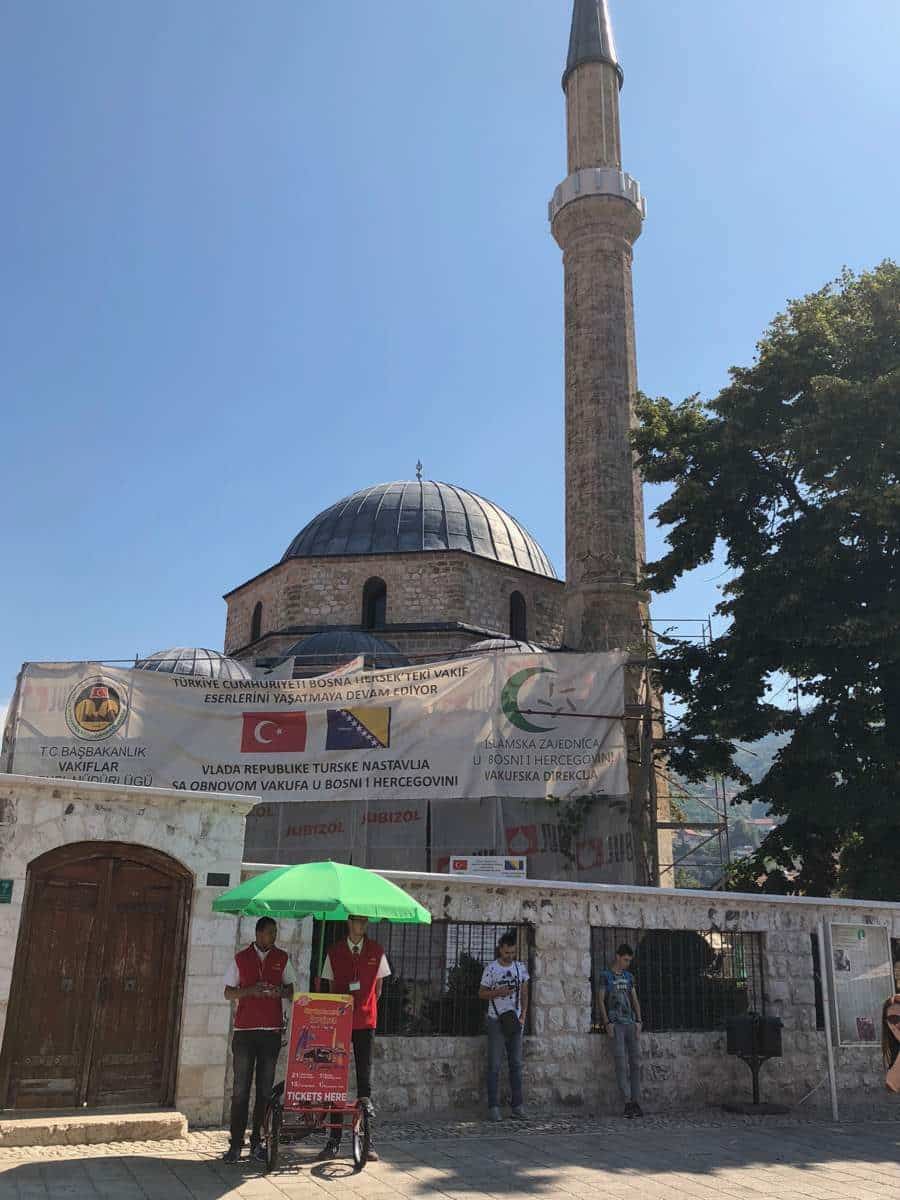

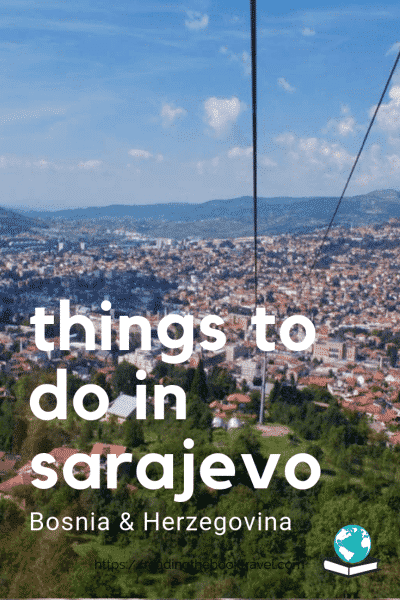
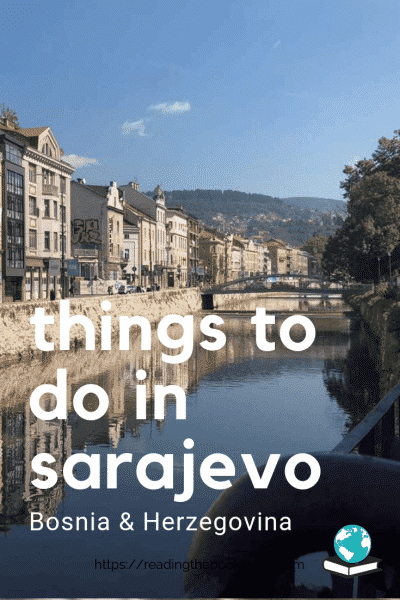
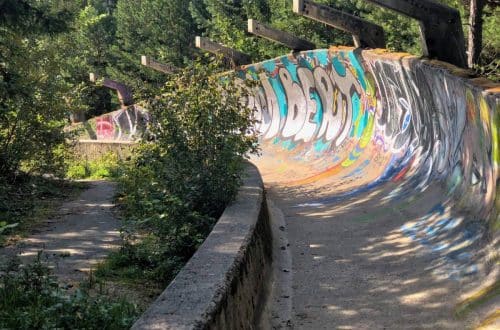
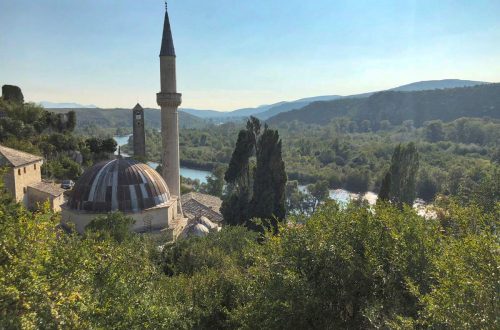
9 Comments
Josy A
Awesome post Jill!
One of my friends visited a few years ago and had to take a taxi to visit the Bob sleigh track. It’s awesome to see you can reach it more easily now!
Jill Bowdery
I know! I was fully expecting the same problem, and then the cable car suddenly opened. It’s worth taking for the view alone!
Jade Johnston
I love the Balkans! I havn’t been here yet though, but its at the top of my list.
Jill Bowdery
I was amazed at how beautiful the region is, but Sarajevo can’t be beaten for its history.
Karen Rose
It’s always so refreshing to find travel posts on destinations that don’t get a lot of attention. Thank you for helping me to discover a little of the world I knew nothing about 🙂
Jill Bowdery
Thanks so much – that’s what I aim to do! There are some incredible places out there to discover!
Same day Agra tour by train
Sarajevo looks beautiful place and you shared good information about that place. I have read your full post You are talking about what’s to do in Sarajevo which is really well-written. Your photographs are really stunning which you have captured on your travel trip.
Jill Bowdery
Thanks so much for your comments, I’m really glad you enjoyed the post!
ahaan
Great blog thanks for sharing.